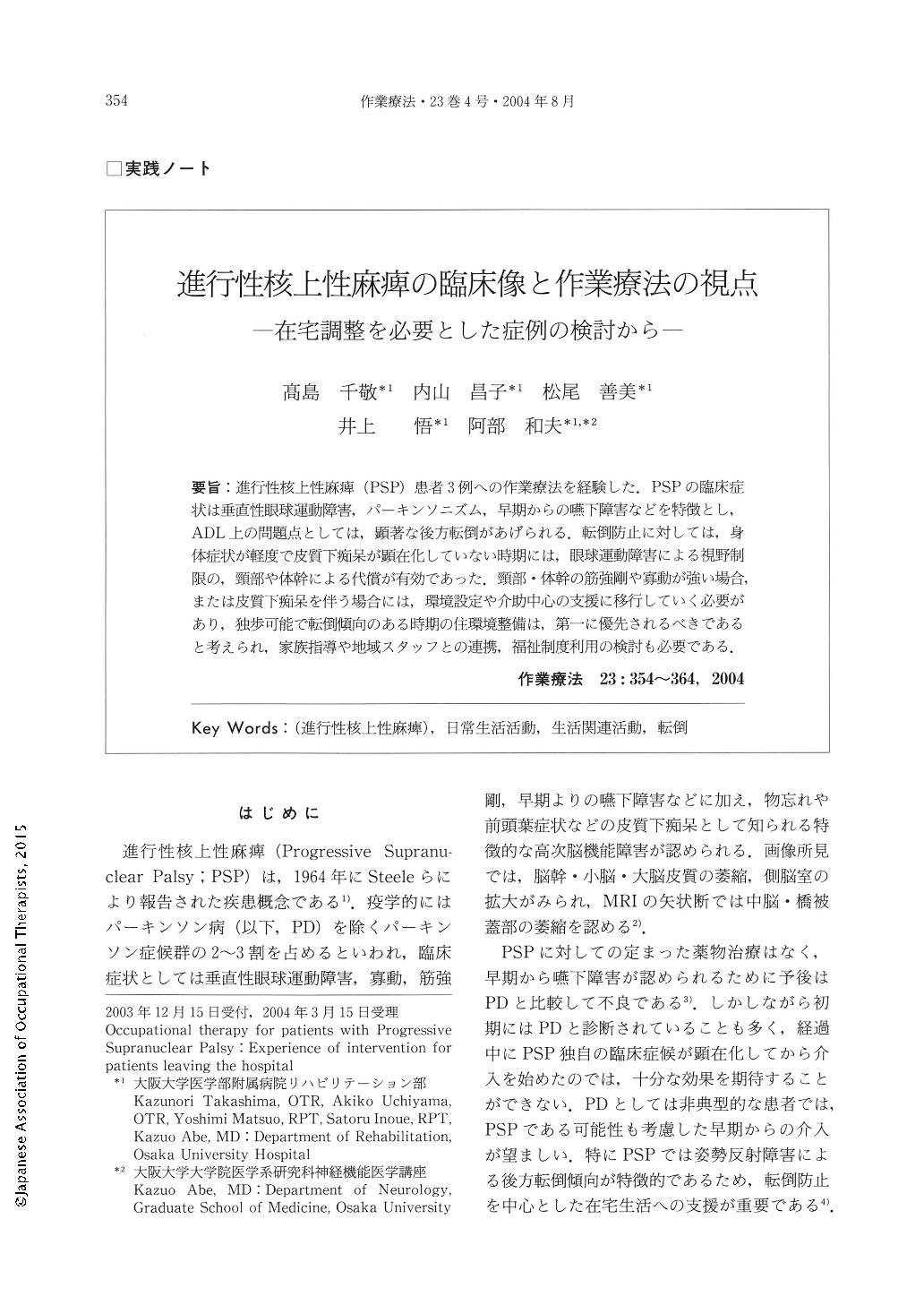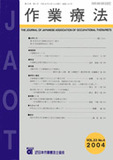Japanese
English
- 販売していません
- Abstract 文献概要
- 1ページ目 Look Inside
- 参考文献 Reference
- サイト内被引用 Cited by
要旨:進行性核上性麻痺(PSP)患者3例への作業療法を経験した.PSPの臨床症状は垂直性眼球運動障害,パーキンソニズム,早期からの嚥下障害などを特徴とし,ADL上の問題点としては,顕著な後方転倒があげられる.転倒防止に対しては,身体症状が軽度で皮質下痴呆が顕在化していない時期には,眼球運動障害による視野制限の,頸部や体幹による代償が有効であった.頸部・体幹の筋強剛や寡動が強い場合,または皮質下痴呆を伴う場合には,環境設定や介助中心の支援に移行していく必要があり,独歩可能で転倒傾向のある時期の住環境整備は,第一に優先されるべきであると考えられ,家族指導や地域スタッフとの連携,福祉制度利用の検討も必要である.
We applied occupational therapy in the cases of three patients with Progressive Supranuclear Palsy (PSP). PSP is characterized by vertical eye movements, a sign of Parkinson's disease, and dysphagia from an early stage, etc. With regard to ADL, one important problem has been backward falling. Our studies have indicated that, with regard to fall prevention, when patients have mild motor function and subcortical dementia, it is useful that eye movement disorder is compensated by neck end trunk flexion. When the problems of severe neck and trunk rigidity, akinesia, along with subcortical dementia, were evident, it was necessary to shift to an environmental setup or support-based care. Falling down is more frequent in patients that often walk, unassisted (say, at home alone), which indicates that patients who often walk alone should require most of our attention. We also found that instruction for the patient's family was important along with the further establishment of cooperation with local rehabilitation staff and welfare services.

Copyright © 2004, Japanese Association of Occupational Therapists. All rights reserved.


